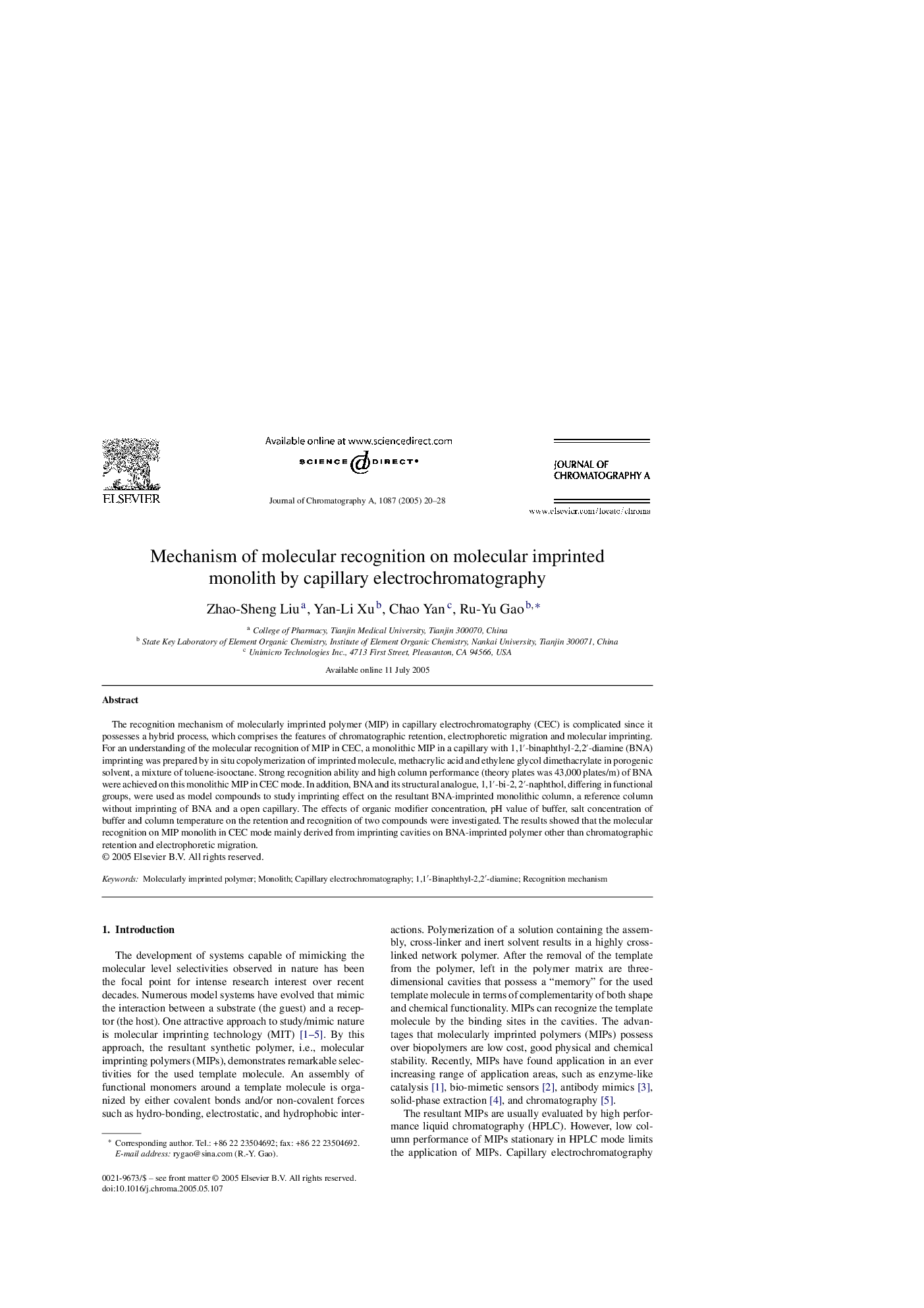| Article ID | Journal | Published Year | Pages | File Type |
|---|---|---|---|---|
| 9748784 | Journal of Chromatography A | 2005 | 9 Pages |
Abstract
The recognition mechanism of molecularly imprinted polymer (MIP) in capillary electrochromatography (CEC) is complicated since it possesses a hybrid process, which comprises the features of chromatographic retention, electrophoretic migration and molecular imprinting. For an understanding of the molecular recognition of MIP in CEC, a monolithic MIP in a capillary with 1,1â²-binaphthyl-2,2â²-diamine (BNA) imprinting was prepared by in situ copolymerization of imprinted molecule, methacrylic acid and ethylene glycol dimethacrylate in porogenic solvent, a mixture of toluene-isooctane. Strong recognition ability and high column performance (theory plates was 43,000Â plates/m) of BNA were achieved on this monolithic MIP in CEC mode. In addition, BNA and its structural analogue, 1,1â²-bi-2, 2â²-naphthol, differing in functional groups, were used as model compounds to study imprinting effect on the resultant BNA-imprinted monolithic column, a reference column without imprinting of BNA and a open capillary. The effects of organic modifier concentration, pH value of buffer, salt concentration of buffer and column temperature on the retention and recognition of two compounds were investigated. The results showed that the molecular recognition on MIP monolith in CEC mode mainly derived from imprinting cavities on BNA-imprinted polymer other than chromatographic retention and electrophoretic migration.
Related Topics
Physical Sciences and Engineering
Chemistry
Analytical Chemistry
Authors
Zhao-Sheng Liu, Yan-Li Xu, Chao Yan, Ru-Yu Gao,
